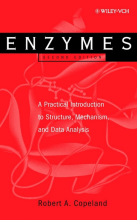Chemical Mechanisms in Enzyme Catalysis - Substrate-active site complementarity
4 important questions on Chemical Mechanisms in Enzyme Catalysis - Substrate-active site complementarity
What forces cause binding between enzyme and substrate?
- Hydrogen bonding
- Hydrophobic forces
- VDW interactions
- Electrostatic interachtons
They overcome energy that is needed to overcome the rotation freedom
What are the 5 things typical for the active site?
- Active site is small compared to the rest of the enzyme
- 3D structure, because it is made by tertiary structures
- The binding between substrate is non covalent
- Active side is in a cleft (aloof), so water is kept out.
- Binding is done because specific molecules bind to each other.
What is the lock and key model?
- Higher grades + faster learning
- Never study anything twice
- 100% sure, 100% understanding
What explains the substrate selectivity?
The question on the page originate from the summary of the following study material:
- A unique study and practice tool
- Never study anything twice again
- Get the grades you hope for
- 100% sure, 100% understanding
































